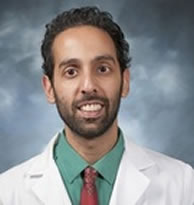articles
Myasthenia Gravis Disorder: Diagnosis, Crisis, and Treatment Overview
By: Sajid Khan, MD
Tel: 913-271-4142
Email Dr. Khan
View Profile on Experts.com.
Myasthenia gravis (MG) is a relatively rare autoimmune disorder of the peripheral nerves in which antibodies are formed against acetylcholine nicotinic receptors. Most patients present with some degree of generalized weakness that is made worse with repeated activity. MG affects women twice as often as men but it can occur in either sex at any age. The classic patient is a female in her second or third decade of life.
Diagnosis
MG is characterized by weakness and fatigue of skeletal muscles that worsens with repetitive use. More than 90% of patients will have ptosis or diplopia without pupillary involvement. Ptosis can be induced or made more pronounced by having the patient perform a sustained upgaze for more than 30 seconds. Diplopia can be brought about by a sustained horizontal gaze for more than 30 seconds. Other symptoms include dysarthria, dysphagia, chewing difficulty, neck flexor weakness, and proximal muscle weakness worse in the arms as compared to the legs.
The most important aspect of emergency management of MG is identifying and treating myasthenic crisis. In fact, up to 20% of patients will present to the Emergency Department for the first time (ie never having been diagnosed) in crisis. Myasthenic crisis is defined as a form of MG so severe that intubation and mechanical ventilation become necessary.
Myasthenic Crisis
Identifying patients at risk for crisis early in the process is crucial to prevent this downward spiral. Use of accessory muscles is an important sign that respiratory effort may not be sustained. Difficulty laying flat and inability to speak full sentences may be indicators of diaphragm dysfunction. Unlike other causes of respiratory failure, the pulse oximetry and arterial blood gas cannot be relied upon as abnormalities tend to occur later in the process, once respiratory failure has already settled in. Starting all patients with difficulty breathing on continuous capnography early can be helpful.
The forced vital capacity (FVC) and negative inspiratory force (NIF) are the main parameters for monitoring severity of crisis and response to treatment. Elective intubation should be considered if the FVC is less than 20 mL/kg or if the NIF is less than 30 cmH20, but this decision should be made based on clinical judgement and not on numbers alone.
Remember that myasthenia gravis is characterized by muscles that become weaker the more they are used: trending the FVC and NIF over time is more important than an individual value. Most recommendations are to check them every two hours.
Intubation
Remember contraindications to the use of succinylcholine: hyperkalemia, neuromuscular diseases, denervation of muscles, tetraplegia, long-term immobilization, extensive muscle trauma, burns, and family history of malignant hyperthermia. Patients with MG are somewhat resistant to depolarizing neuromuscular blockers like succinylcholine. In reality, succinylcholine has been shown to be safe but patients may require higher than expected dosages (studies have shown that you will need to use about 2.5x the dose you normally would). The problem is that these higher doses can lead to an unpredictable and lengthy paralysis so a non-depolarizing agent such as rocuronium may be preferred. In summary: the same medications may be used, but higher doses might be necessary - potentially leading to more unpredictable paralysis. Alternatively, non-depolarizing agents such as vecuronium or rocuronium may be utilized.
Treatment
Treatment involves corticosteroids and/or IVIG. Obtain early emergent neurology consulation and engage in shared decision-making.
It is important to know what can precipitate a crisis: when a patient takes warfarin one should think twice before prescribing any medication: the same is true for patients with MG. If a patient has a documented history of MG and comes in for something as simple as a UTI, consider the options before deciding on an antibiotic. Common causes of crisis in patients with MG include fluoroquinolones, aminoglycosides, macrolides, and IV contrast dye.
Summary
Myasthenic crisis is a rapidly progressive and potentially fatal condition. Early consideration and bedside confirmatory tests are essential. Have a low threshold to establish a definitive airway using higher than typical doses of paralytic medications. Involve the consultant early and be extra vigilant when caring for anyone with a history of myasthenia gravis.
Dr. Sajid Khan, MD, is a board-certified Emergency Medicine physician with over 10 years of experience working in a variety of settings from inner-city level 1 trauma centers serving 100,000 patients per year to 3-bed rural Eds. A published author, Dr. Khan has written a number of books including, The Ultimate Emergency Medicine Guide, a comprehensive review book that is the highest-rated and most up-to-date text for Emergency Medicine physicians preparing to certify.
©Copyright - All Rights Reserved
DO NOT REPRODUCE WITHOUT WRITTEN PERMISSION BY AUTHOR.


